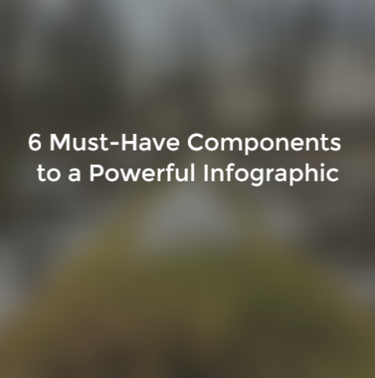
1. Has your target audience in mind
In the early planning stages, you need to think about your audience - who your infographic is for - and create it with them in mind. You need to ask yourself what type of data they would find useful and interesting and then use that as the basis for the infographic. Tell them something they don't know. You can have a beautifully designed infographic but if it provides your audience with little value, you won't be successful.
2. Contains an effective headline
An effective headline intrigues. It has the "curiosity factor." And it grabs attention without overpromising or disappointing your audience once they've viewed the infographic. It's also not too long (strive for about 70 characters). I've seen headlines where a stat or fact from the infographic was pulled out. Long, wordy headlines can turn people away. If you have some really interesting or surprising facts you'd like to showcase, save them for the infographic itself rather than the headline. It's worth spending some time coming up with a short attention-grabbing headline.
3. Tells a story
Great infographics tell a story. They take viewers on a journey. Remember though that the story should be told mostly through visuals so try to use as little text as possible. Each set of data, or idea, in the infographic should relate to the others or flow together. The infographic should be designed with this in mind. The marketing consulting firm Socially Sorted explains this well. They say that every infographic should have a main concept or big idea, should connect the dots to explain this big idea and tell the story, educate its target audience, and provide support or structure to the story.
4. Showcases powerful data
It's important to educate or inform your audience about something they don't know but are likely very interested in knowing. Feature interesting data that either was gleaned by you or from reputable sources. You need to make sure that the information you're presenting is correct. That's why double-checking sources and fact checking is so critical. As well, remember to cite all of your sources.
5. Has a clear and cohesive design
Simplicity is key here. The infographic should have consistent colors and fonts (it's best if only one type of font is used and there are a limited number of colors), and establish flow from one section to the other. Also try to make sure that the infographic doesn't look cluttered by including white space, when and where necessary. When it comes to size, the ideal horizontal width is 735 pixels and the ideal vertical width is 5,000 pixels. If it's too long, you risk people loosing attention. Lastly, a compressed JPEG image is best to prevent slow load times.
6. Is timely
Matt Siltala, President and Founder of the digital marketing agency Avalaunch Media, said the following to Marketing Land: "I think one of the biggest factors in the success of an infographic is whether it's timely. For instance, we timed this 'True Cost of the iPhone 5' graphic to coincide with the iPhone 5's release. Since the iPhone 5 itself was buzzing, there were a lot of publishers willing to run a graphic that introduced a new perspective on a popular topic. Mashable, Gizmodo, Huffington Post and others were willing to run this graphic because it was relevant right then."
His comments raise a number of important points. First, you can get a lot more attention on an infographic that revolves around a current hot topic that people are already buzzing about. And when it comes to PR, you're increasing the chances that publications and key influencers will want to share it, which amplifies its reach and gets it in front of much larger audience. Capitalizing on current news or events can pay big dividends if done appropriately.
There are a number of valuable benefits to creating infographics. But a lot of businesses are not having the type of success with them that they hoped for. Likely, they haven't fully understood key best practices before beginning their work. Now that you know six must-have components to successful infographics, you should be well on your way to getting the results you're looking for.
